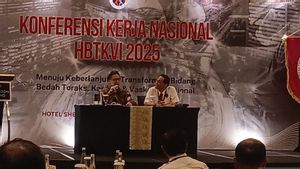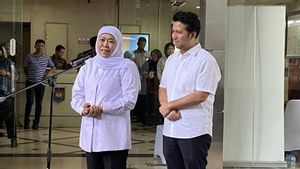JAKARTA - The seeds for the revival of the Indonesian women's movement began long before Indonesia's independence. At that time, many women's organizations were born, such as Aisiyah, Catholic Women, Putri Merdeka, Wanita Taman Siswa, and others.
History shows that nothing can stand alone. Each of them is related. Including the first Indonesian Women's Congress which was still related to the spirit of the Youth Pledge in 1928. The drive for nationalism among women contributed to the idea of holding the first Indonesian Women's Congress on 22-25 December 1928 which was held in Yogyakarta.
Held in a Dalem Jayadipuran pavilion belonging to a noble, RT Joyodipoero, the Congress was attended by women's organizations from various regions in Indonesia, namely Putri Budi Sejati, Putri Indonesia, Catholic Women, Rukun Wanodyo, Wanito Sejati, Dharma Laksmi, Budirini, Marginingkautaman, Kartoworo , Budi Wanito, Jong Java, Jong Islamieten Bond, Wanito Kencono, SIBI, Hoofbesturr, Aisiyah, Sancoyorini, Wanito Utomo, Wasito Mulyo, Taman Siswa, Panti Krido Wanito, Nahdatul Fata'at, Kusumorini and Sumatran Wife Envoy.
Referring to the reportage of the First Women's Congress by Koran Isteri, published in May 1929, it is stated that there were a thousand women present at the opening of the first Indonesian Women's Congress. Meanwhile, the report of Rangkayo Khairul Syamsu Datuk Tumenggung alias Nj Toemenggoeng, as quoted by Susan Blackburn in her book First Women's Congress: An Overview, the number of women attending the meeting was around 600 people.
Meanwhile, the driving force for the Indonesian Women's Congress was driven by three women, namely Mrs. Soekonto, an activist from Wanito Utomo, Nyi Hadjar Dewantara, a Taman Siswa activist who is also the wife of Ki Hadjar Dewantara, and Miss Soejatin who are members of the Putri Indonesia organization. These three women aroused the enthusiasm of women to realize their ideas and hopes to discuss important things that women can do in the national movement.
As a result, a congressional committee called the Hoofdcomite was formed. Consisting of 15 women from various organizations, namely RA Soekonto (Wanito Oetomo), St. Moendjijah (Aisiyah), St. Soekaptinah (JIB), Miss Soenarjati (Poeteri Indonesia), RA Hardjodiningrat (Wanito Katholiek), Ms. Moersandi (Wanito Katholiek), Nyi Hadjar Dewantara (Taman Siswa), Ms. Moeridan (Partij Sarikat Islam Wonodijo), Mrs. Drijowongso (Partij Sarikat Islam Wonodijo ), Oemi Salamah (Wanito Moeljo), Djohanah (WanitovMoeljo), Ms. Badiah (Jong Java), St. Hajinah (Aisiyah), Ismoediati (Wanito Oetomo).
The congress which was attended by various backgrounds, organizations, education and even ages, was carried out with seriousness to form a larger women's organization in order to unite the various women's organizations in the Dutch East Indies region into one association.
This can be seen from the notes of Mrs. Soekonto from the Oetomo Women's organization which read:
The harmonious cooperation between the representatives of the older and younger organizations attracted tremendous attention, especially since there were huge differences in their educational levels. The younger women were kindergarten teachers, AMS students and others, while the much older women were completely uneducated. However, they respect each other. In the election for president of the congress I expected that one of the kindergarten teachers would be elected chairman, because these young women were strong candidates. However, the majority vote voted for Mrs. Soekonto.
The results of this first Indonesian Women's Congress succeeded in forming a more solid women's organization, namely the Indonesian Women's Association (PPPI). The use of the word woman for the name of this organization is based on the growing awareness and higher appreciation, because the word woman is considered more appropriate to be used than woman. The word woman comes from the word Empu, which means noble. Empuan in Classical Malay literary culture is used to refer to the king's wife.
The first Indonesian Women's Congress also produced three motions which were entirely aimed at the advancement of women at that time. First, demands additional schools for girls. Second, improving the rules regarding marriage. Third, improving the rules for widows and orphans. Fourth, preventing child marriage.
The congress was recognized as a milestone in the revival of the Indonesian women's movement. So that the 3rd Indonesian Women's Congress held in Bandung in 1938 stated that every December 22 was celebrated as Mother's Day. The commemoration was continued by President Soekarno who set December 22 to be celebrated as Mother's Day through Presidential Decree No. 316 in 1959.
The English, Chinese, Japanese, Arabic, and French versions are automatically generated by the AI. So there may still be inaccuracies in translating, please always see Indonesian as our main language. (system supported by DigitalSiber.id)









